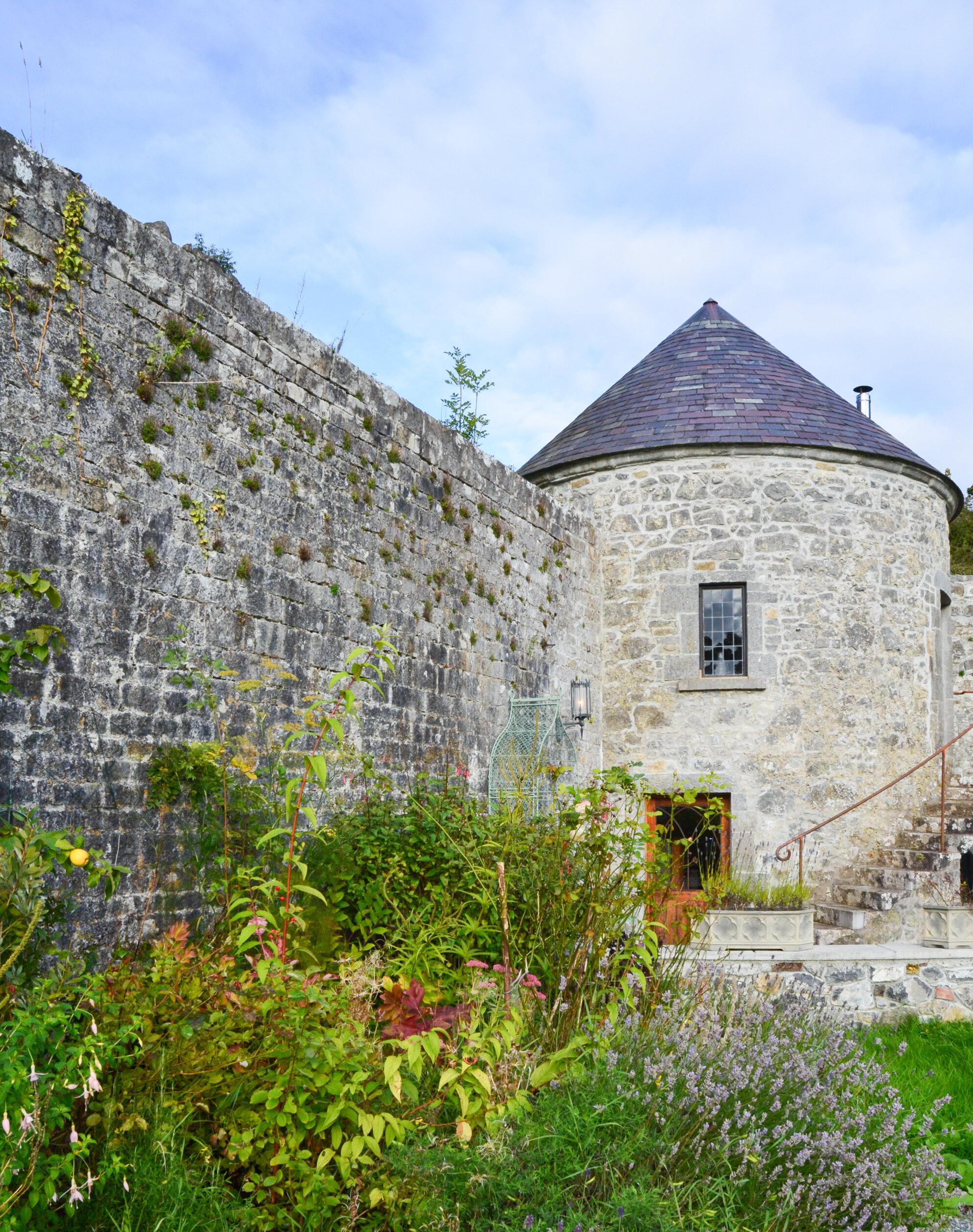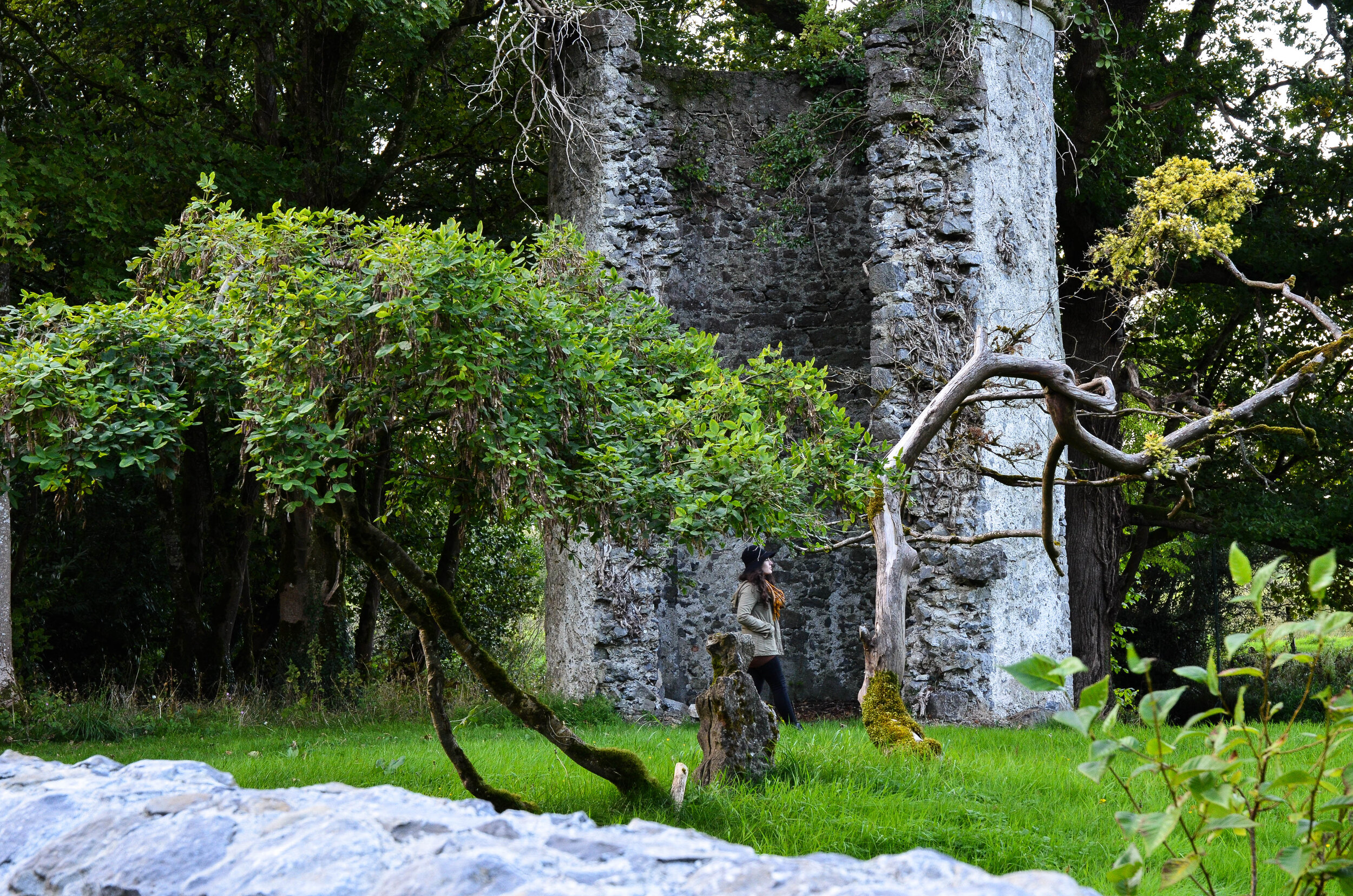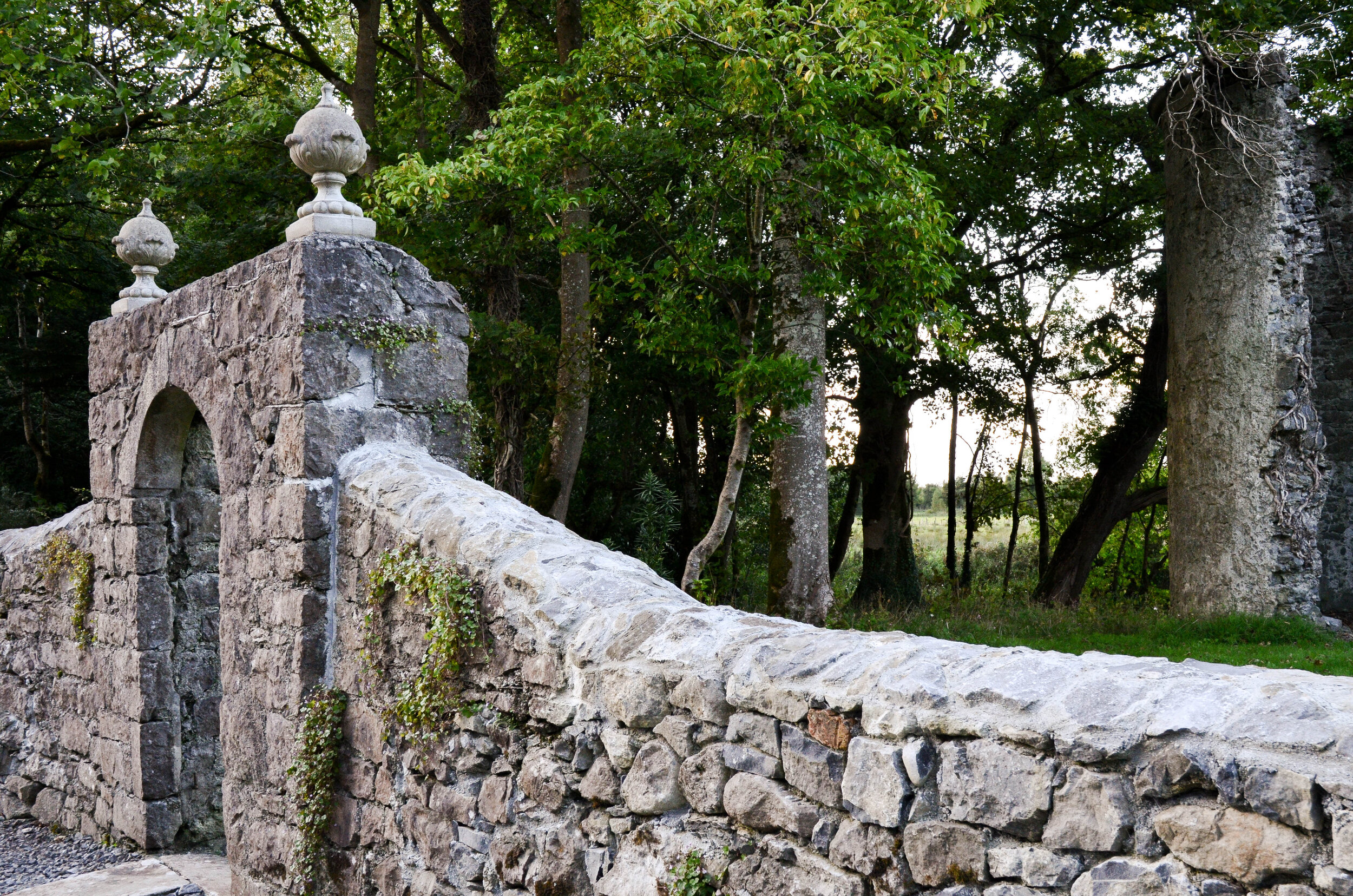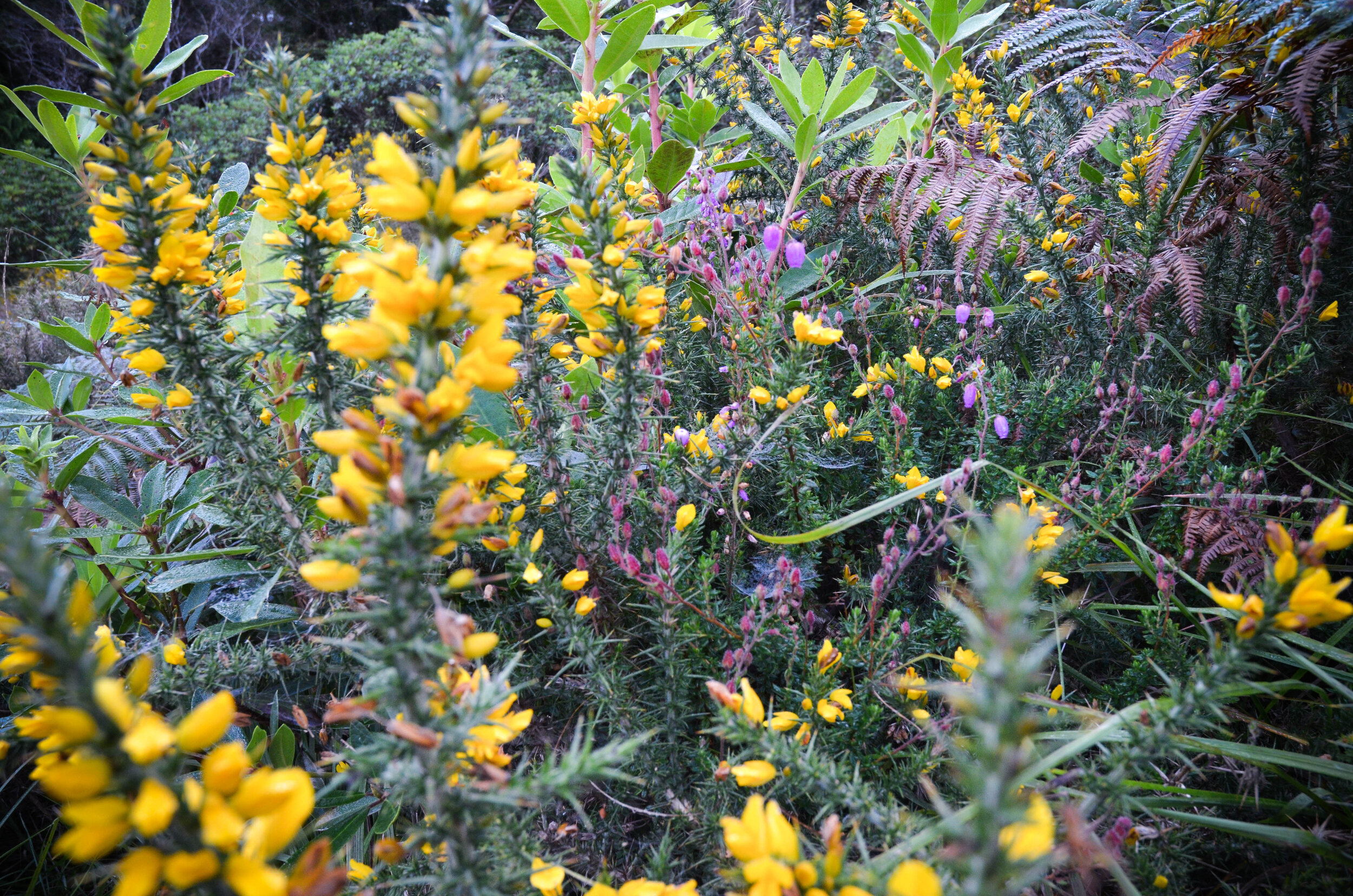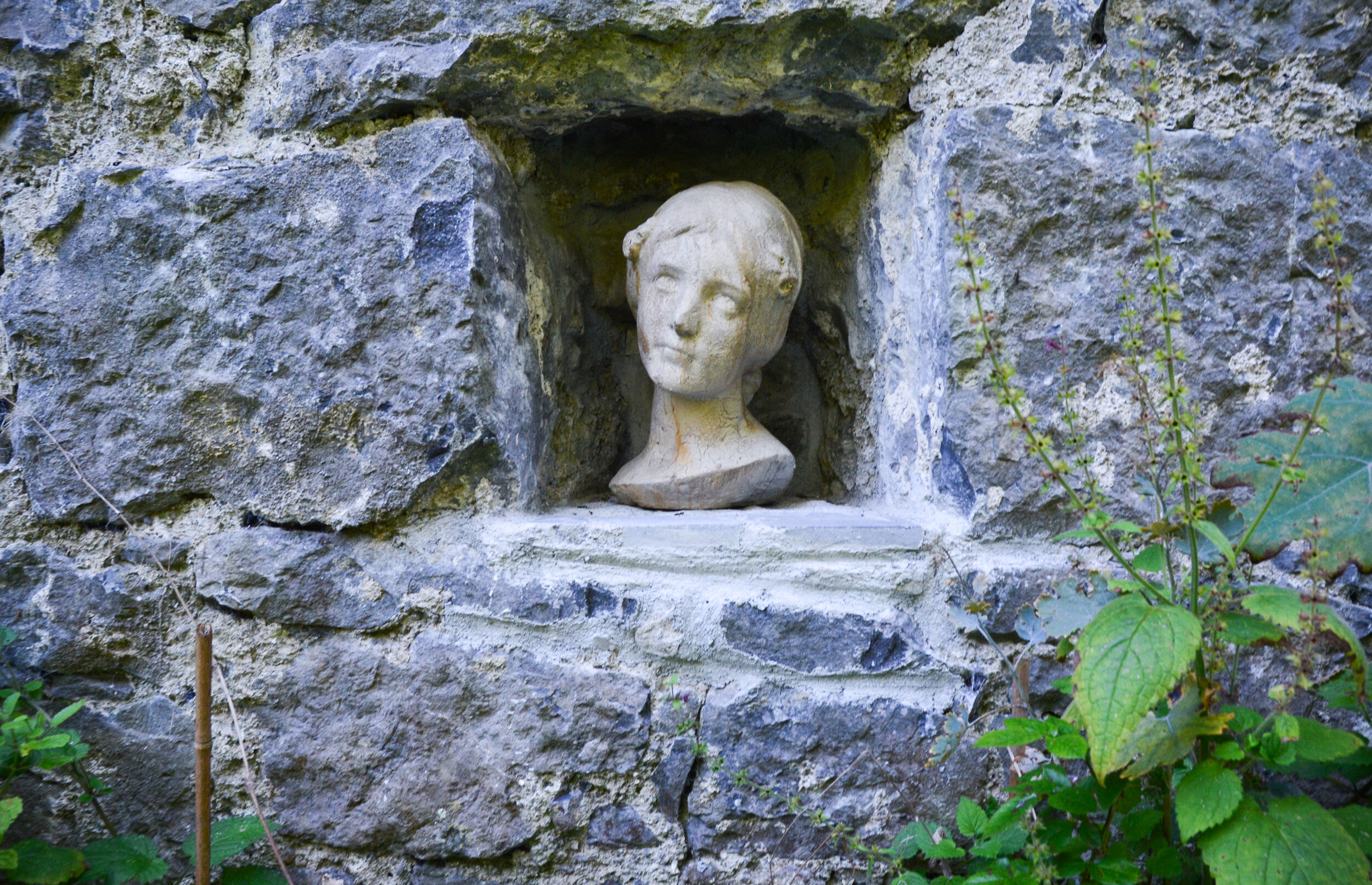Noble Quest (WOW Air)
Ballynahinch Castle; all photos by Krista Connor
What’s it like to stay in Irish castles? Krista Connor and her sister Leilah find out on a cross-country journey to four very different castle hotels fit for the 21st century traveler.
“They’ll be here by nightfall,” Leilah said, peering through the narrow window for a glimpse of our enemies.
“Will the castle hold?” I asked.
An appropriately cold Irish rain fell, and heavy wind swept from the forest across the meadow, over the river and into Clonbrock Castle.
With the 15th century castle to ourselves, my sister and I had a good laugh at our faux invasion, though such a scene would have once been a reality and certainly no laughing matter. But those times are long gone, obviously. For us, on our journey from the gentle green of the east to the sweeping west, Clonbrock was the first check-in of four castles-turned-hotels fit for the 21st century traveler.
Clonbrock Castle’s restored turret
Life In a Turret at Clonbrock Castle
Just one of the castle’s turrets – round watchtowers – has side-stepped time and remained intact, connected to the castle (or rather, tower house) by an original stone wall. This would be our accommodation.
Inside, a staircase twisted from the kitchenette to the bedroom. More than five hundred years ago this tower housed soldiers, where they probably shivered and swapped crude jokes or held spitting contests or whatever 15th century soldiers do – aside from guarding the lord and lady’s livestock from the wilds of the night: marauding folk and rogue wolves.
When a few more centuries passed and the need for clan swordsmen faded and the gentry arose, the turret stored apples.
Now, it’s an Airbnb. Complete with running water and electricity, and a toaster oven which we used to cook frozen pizza from a local market.
The castle owners don’t hesitate to indulge visitors’ imaginations. For example: our room access was with a skeleton key. Then there’s the walled gardens, apple trees, walking map of the estate paying homage to classics with markings like “Mirkwood Forest” and “Secret Garden.” The idea was for guests to pad far enough away across rain-drenched clover that they’d feel, if even for a moment, the delicious twinge of childlike discovery. (Which wasn’t difficult for us; we’re already known to overuse quotes like “I wish the ring had never come to me” or “Dracarys.”)
Clonbrock, on the eastern edge of County Galway, would probably be in ruins today if it wasn’t for these owners, U.K. expats Jonathan and Beverly Baylis, who have spent the past 12 years restoring the estate (though they’ve left the tower house itself in as original condition as possible; to the untrained eye, it appears untouched). One morning, warm in our hosts’ dining room — in one of the handful of restored dwellings attached to the castle wall — over a course of coffee and cookies, the four of us talked of castles and clans.
“Clonbrock is its own secret kingdom,” Beverly said. “There aren’t many castles you can go around by yourself. There’s usually someone with a clipboard collecting a fee. It’s more of an adventure – it’s all a bit Lord of the Rings.”
According to a document titled the Annals of the Four Masters, Clonbrock was built in 1469 by a chieftain, Tadhg Caoch O’Ceallaigh, though later it was bought by Anglo-Norman Thomas Dillon. The castle has remained standing in part due to Victorian descendants, including heiresses who had an appreciation for romantic ruins and photographing them, though the family eventually lost their fortune and that’s when the estate fell apart.
Jonathan and Beverly’s part in the tale is coming to a close, too. They currently have the castle for sale for €1.2 million, though they do expect to accept Airbnb bookings through next year.
Later, Leilah and I climbed through empty castle corridors to face the alarming hush one would expect of such a place. I looked down at the lawn and imagined the Victorian Dillon girls pause from some frolicking, white-linen-clad garden party to glance up at that fading beast of a castle. I’m sure they felt the shivers brought on by the watchful emptiness of the great tower, and perhaps like us, they’d spin ridiculous tales about what had come before.
At Home In Ballynahinch Castle
Along scenic route the Wild Atlantic Way, we’d trade fertile fields for the harsh landscape of Connemara, a region of gnarled beauty peaked by desolate mountains. In this setting, just inland from Roundstone Bay and the Atlantic, dwells Ballynahinch Castle at the curve of the Owenmore River and the foot of the Twelve Bens Mountains.
Life at Ballynahinch was warm (due in part to its six open log fires), like staying with an old friend who happened to be very rich – but who was never showy about their intrinsically perfect taste in food and décor. The estate dates back to 1590 with ties to famed Gaelic pirate queen Grace O’Malley, who lived nearby. The present castle was built in the 1700s by a prominent local family.
The 48-room Ballynahinch, complete with a pub and dining room, felt like a cozy lodge surrounded by 700 acres of affectionately-tended grounds. For fishing, the river was fully stocked with salmon, carefully curated; hiking trails surrounded the castle, and nature was permitted to be nature; inside the castle, a foyer filled with wellies and rain jackets was available to guests. All we were missing was the tweed.
At its heart, Ballynahinch is about immersive experience. There’s a juxtaposition between dirt-under-your-nails adventure and four poster beds, vaulted ceilings and award-winning dining. Through the former example, we found ourselves on a hiking excursion with guide Noel Joyce, who, having grown up in Connemara, knew every historical, archeological, geological and botanical detail of the estate and region. At one point he stopped to differentiate between various forms of heather before popping a yellow gorse petal into his mouth.
“You’ll probably find something like this in one of your meals. We source a lot of ingredients from the estate,” he said.
Ingredients probably come from Roundstone Bay, too, where we later found ourselves bobbing off the coast in a small fishing boat the Nancy Lee II with skipper John Sullivan, searching for mackerel. We weren’t having much luck, though John kindly insisted on staying out past our timeslot. He was determined that Leilah with her “sea legs” or I-almost-over-board would catch something.
The town of Roundstone
Later, the receptionist greeted us with “How was your boating trip?” I don’t know how the staff keeps guests straight, but they do. Then we headed to our suite to swap wind-tossed clothes for something more appropriate; a five-course meal experience waited.
Ashford Castle: For the Aspiring Aristocrat
If you’re ever around Galway and in need of a taxi, find Ted Murphy of Galway Taxis. He drove us to our next destination, Ashford Castle in County Mayo, on the shores of Lough Corrib – still Connemara, though tamer. During the drive, Ted functioned as more of an enthusiastic tour guide in love with his country, maintaining that he stop to let us take pictures of sheep crossing the road and declared it mandatory we pose in front of a house from an old film The Quiet Man, which has played an important role in the more recent history of Ashford and, more specifically, the town of Cong where it was filmed, and which functions as a practical shrine.
Ashford was a palace. And when drenched with rain its gothic towers were gloriously terrifying, something that I guess should be expected of an 800-year-old castle.
Once owned by the Guinness family, Ashford underwent a two-year, $50 million makeover after it was bought in 2013 by Red Carnation Hotels company headed by husband and wife Stanley and Beatrice Tollman.
Everything inside was velvet or crystal; ceilings stretched infinitely upward. Decadent afternoon tea was enjoyed in the company of portrait-bound aristocrats overseeing the room from their wall perch.
Everyone played a role – housekeepers looked like Victorian maids; men in green uniforms opened and closed our doors, carried our umbrellas, addressed us as “madam.” In truth, I felt like an imposter, but played along in this fantasy that I was actually Somebody – and thoroughly enjoyed it.
One evening during a walk about the perfectly-manicured estate, a disturbance at the moat bridge caught our eyes. Cheering children with green flags flooded the bridge, a guy with bagpipes appeared. “The owners are visiting,” we were told later.
Though ridiculously out of his way, Ted the taxi driver had offered to transport us to our next transfer after our stay at the estate’s Lodge at Ashford Castle (which is modern and approachable and its Quay Bar produces the best mushroom soup). “How was afternoon tea? Fine dining at its best, eh? Remember, return to Connemara one day,” Ted said. “Give me a call when you get here.”
Bold & Whimsical Clontarf Castle
Of all our royal hosts, I appreciated how the final castle, Clontarf Castle Hotel, was unabashedly fun with hardly a somber nook in its ancient bones. Located minutes from Dublin, Clontarf embraced the quirky side of medieval history, decked out with furniture made of bright purple fabric, a few pairs of thrones and soundtrack-worthy instrumental music playing in the lobby. I wouldn’t have been shocked if a court jester popped out from behind a floor-length tapestry to dance for us and make merry. It’s the kind of place where you could probably tease “Off with his head” and wouldn’t feel judged (hopefully).
Dining here is no joke, though. Eclectic Fusion Afternoon Tea and award-winning Fahrenheit Restaurant cement you in the present day with mostly-local small plate dishes. And a self-guided contemporary art trail winds through the halls, encouraging exploration.
Our real, plebeian lives eventually caught up to these strange counterparts, who had so quickly adopted gracious nods to things like “Your suite is ready, miss.” You have to understand – starting back in Connemara, we’d even begun to change our clothes for afternoon tea without a whiff of irony.
Whenever I feel like these castles and moors, mountains and heather are slipping into myth, I’m grounded by recalling a certain taxi driver who’s out there right now wheeling around the west and spreading his love for Ireland. Most people wouldn’t come across a random taxi driver halfway around the world for a third time, but I know we will because we made a promise to return. And a lady always keeps her word.

